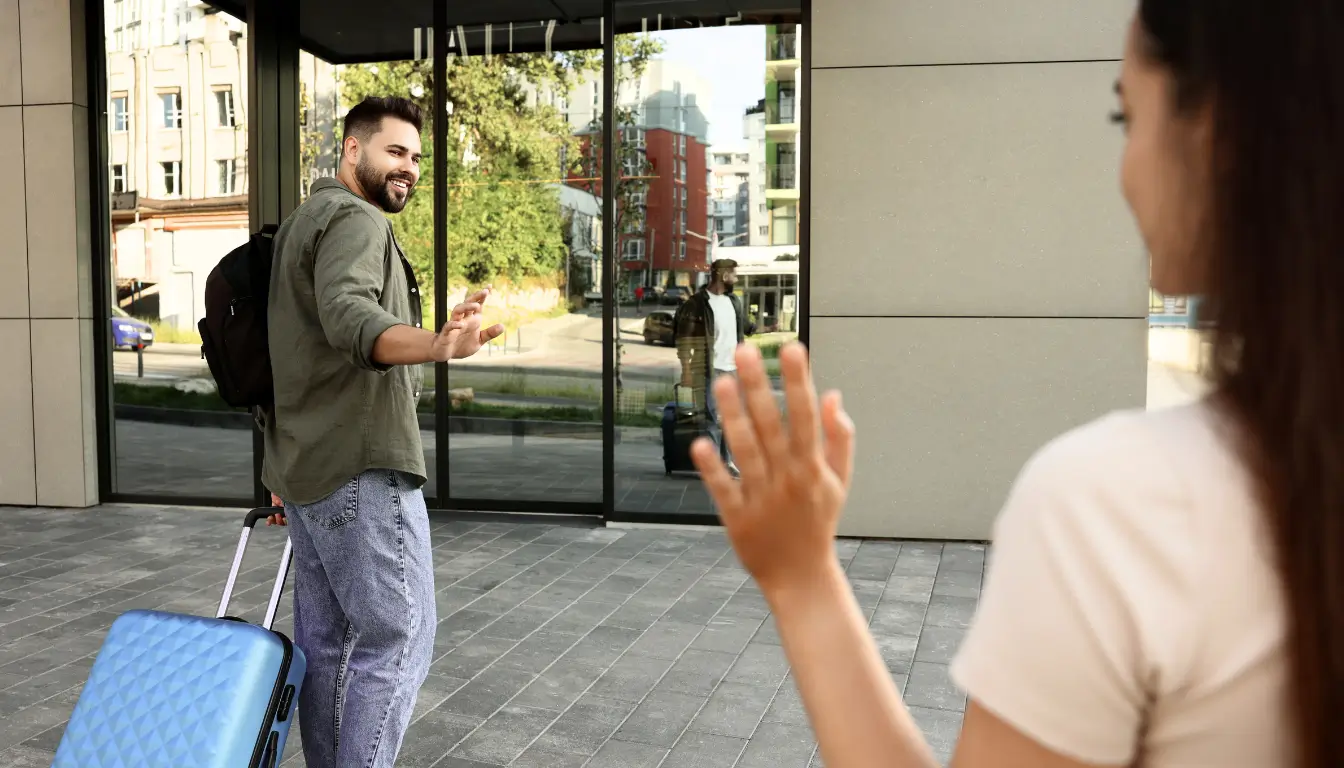When Technology Isn’t Enough: How to Build Emotional Intimacy in Long-Distance Relationships?

Meet Priya and Sam. Priya, a graphic designer in Bangalore, spent her mornings creating art for clients, while Sam, a financial analyst in London, juggled spreadsheets and deadlines late into the night. Though technology kept them in touch - calls, texts, and virtual movie dates - they began to notice a gap.
“Why do I feel distant even when we talk every day?” Priya wondered after yet another silent video call. Emotional intimacy, they realized, needed more than just a good internet connection.
If you’ve ever felt the same way, here are five ways to strengthen your emotional connection when technology falls short:
1) Intentional Conversations Beyond the Surface

Routine conversations can sometimes feel repetitive. While talking about your day is important, it doesn’t always nurture deeper intimacy. Instead, explore meaningful topics that reveal your partner’s inner world: dreams, fears, or cherished memories.
Tip:
Dedicate one evening to “question night,” asking open-ended prompts like, “What’s something you’ve always wanted to do but haven’t?” or “What’s a childhood memory that shaped who you are today?”
Research Insight:
Studies show that meaningful conversations increase emotional closeness and strengthen bonds in relationships (2).
2) Share Small Wins and Struggles

Sometimes, it’s the little things that matter most. Sharing your daily highs and lows allows your partner to feel more involved in your life, even when they’re miles away (4). Priya and Sam started sending quick voice notes about their minor victories and frustrations, like a tough meeting or finding the perfect breakfast spot. These moments brought a comforting sense of connection.
Tip:
Use a shared app or journal to jot down daily reflections for your partner to read. These small updates create a window into each other’s day-to-day lives.
3) Create Shared Rituals

Rituals provide a sense of consistency and connection, helping couples feel united despite physical separation (3). Whether it’s a Sunday morning coffee call or sending goodnight texts at the same time, rituals can create emotional comfort and familiarity.
Priya and Sam started “Wednesday Wisdom,” where they each shared a meaningful quote or thought that resonated with them that week. It became a ritual they looked forward to, even amidst their busy schedules.
Tip:
Design a weekly tradition, like watching the same TV show “together” and discussing it afterward or cooking the same recipe and sharing photos of the results.
4) Prioritize Emotional Reassurance

Distance can sometimes amplify insecurities or doubts. That’s why emotional reassurance is crucial in maintaining intimacy. Small gestures like sending loving messages, expressing gratitude, or affirming your commitment can make your partner feel valued and secure.
Sam began writing Priya short emails titled, “Why I’m Grateful for You Today.” On particularly tough days, Priya would reread those messages, which instantly brought her comfort and a sense of connection.
Tip:
Schedule surprise love notes or send thoughtful reminders, like, “I’m proud of you” or “Thinking of you today.” It’s a simple yet powerful way to nurture emotional intimacy.
5) Send Tangible Tokens of Love

While technology connects us, physical items often carry a unique emotional weight. Handwritten letters, thoughtful care packages, or a shared photo album can make your partner feel loved in a way a digital message can’t (1). Priya sent Sam a care package filled with his favorite snacks, a scarf with her perfume, and a heartfelt letter. Sam said it felt like “a hug from afar.”
Tip:
Create a memory box filled with sentimental items. For example, concert tickets, photos, or even something your partner left behind. Something they can open whenever they need a dose of comfort.
To Sum Up: Emotional Intimacy Takes Effort
Technology can bridge the physical distance, but it’s personal, intentional gestures that nurture emotional intimacy. By having deep conversations, sharing daily moments, and building rituals together, you can strengthen your bond and make the miles feel smaller.
Remember, emotional intimacy is built on effort, creativity, and love. Even when the physical distance seems overwhelming, these simple practices can help you and your partner stay deeply connected.
Looking for more advice on navigating long-distance relationships? Check out additional resources at Expathy.org, and remember - love has no limits!
References
1. Aylor, B. A. (2003). Maintaining Long-Distance Relationships. Maintaining Relationships through Communication, 127–140. https://doi.org/10.4324/9781410606990-6
2. Ferch, S. R. (2001). Relational Conversation: Meaningful Communication as a Therapeutic Intervention. Counseling and Values, 45(2), 118–135. https://doi.org/10.1002/j.2161-007x.2001.tb00190.x
3. Garcia-Rada, X., Sezer, O., & Norton, M. I. (2019). Rituals and Nuptials: The Emotional and Relational Consequences of Relationship Rituals. Journal of the Association for Consumer Research, 4(2), 185–197. https://doi.org/10.1086/702761
4. Reis, H. T., Smith, S. M., Carmichael, C. L., Caprariello, P. A., Tsai, F.-F., Rodrigues, A., & Maniaci, M. R. (2010). Are you happy for me? How sharing positive events with others provides personal and interpersonal benefits. Journal of Personality and Social Psychology, 99(2), 311–329. https://doi.org/10.1037/a0018344
Articles
See all